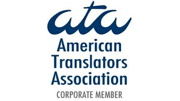 Proofreading Checklist Part I: Vocabulary
Proofreading Checklist Part I: Vocabulary
One of the benefits of doing regular review work as a translator is that it offers useful reminders of things to watch out for in your own translation tasks. It is always easier to spot errors or stylistic glitches in someone else’s work, so this is a great opportunity to draw up a generic checklist of potential pitfalls to avoid. Most of these are obvious but having them listed explicitly in a proofreading checklist makes them easier to spot when reading through text that you have worked on yourself. In Part I the focus is on vocabulary choices; Part II will delve into grammatical and stylistic flaws to look out for.
Ditch the dictionary
Most words offer a variety of translation options. The crucial question to ask is does the chosen word make sense in this context? It’s surprising how often a translation choice is made that is completely illogical, and often the fault can be traced back to an over-reliance on dictionary definitions. A text involving promotional materials for a conference, for example, translated the German Einspieler as interludes, which is likely to baffle the reader when what was meant are film clips or short videos. Similarly, the description of a conference session in German as überzogen requires the translator to go beyond standard dictionary options such as overdone, excessive and overblown because what was meant in this particular context was a session that overruns, i.e. fails to stick to the schedule.
Don’t be fooled by false friends
These overlap with the need to ditch the dictionary but are so common they deserve a checklist item of their own. Overly literal vocabulary choices are sometimes difficult to spot in your own text when you are familiar with the source language, but these are usually glaringly obvious to a native speaker reading the text in isolation. This blog has touched previously on my personal bugbear about the translation of German Variant with English variant, a seemingly endless source of clunky translation examples. Consider the phrase “Dazu bieten wir viele Varianten an”. The meaning might be clear if translated as “We offer many variants for this”, but a much more elegant phrasing would be something like, “We offer lots of options with this in mind”.
Once again, context is everything when it comes to vocabulary choices. While the German Podium might often be translated entirely appropriately as English podium, in the context of a conference panel discussion (Podiumsdiskussion) the association with an Olympic medal ceremony is distracting.
One word or two
Let’s be honest, we all struggle at times with these, and for good reason. There is a natural evolution from two separate words to one (often via a hyphenated option). Check out the Google ngram viewer for hair dryer and hairdryer (the latter has been rising steadily over the last couple of decades, recently overtaking the two-word option). The best approach for the one-word versus two-word dilemma is often an internet search or ngram to see which option is prevailing. A recent review task had goose bumps as separate words, but a quick internet search suggests almost ten times as many hits for the single word variant goosebumps.
Proofreading Checklist Part II: Grammatical Glitches

In Part II of our proofreading checklist, we run through some obvious grammatical glitches that can afflict translated text.
Word order
Sticking ruthlessly to the word order in the source text can result in stylistic oddities. A text I recently reviewed contained the German phrase emotionale Negativmomente, and my instinct was that the phrase sounds rather odd when translated as emotional negative moments and is better reordered as negative emotional moments. A quick Google search confirms that hunch, with zero hits for the former compared with a couple of thousand for the latter. Grammatical order is not always explicable or logical, but in this case my hunch is that while you can clearly have an emotional moment that is either negative or positive, I am not sure how you could have a negative moment that does not involve emotion. (The same logic does not appear to apply to the German!).
Clunky phrasing as part of your proofreading checklist
Jarringly inelegant phrasing is usually a sign that the translator has been overly influenced by the source language. For example, the German “Der Austausch zwischendurch ist goldwert” rendered as “The exchange in between is worth its weight in gold” rather than a more idiomatic rephrasing such as “Occasional conversations are worth their weight in gold”. These are perhaps best captured by repeatedly asking yourself whether a native speaker would ever express themselves this way. Another good trick is to explain out loud whatever message is being communicated, often that forces you to focus on the substance of the text without the tell-tale unorthodox phrasing.
Definite/indefinite articles
This is a common difference between languages and a surprisingly common stylistic flaw in translation given how easy it is to fix. For example, the German “Ein gelungenes Lichtdesign” sounds odd when translated literally as “A successful lighting design” and is much more likely to be written in English without the indefinite article, “Successful lighting design”.
Avoid tautology, even if they do it in the original
German seems to tolerate repetition within a sentence in a way that English does not, commonly throwing in a redundant auch (also/too) following another word with essentially the same meaning, e.g. zudem. Another good example of this cropped up in a recent review where the German sentence described the importance of “sorgfältige Planung …. in Vorfeld” which translates literally as “careful planning in advance”. This begs the question what kind of planning is not done in advance? Once planning is mentioned in English, the information provided by in advance is redundant and is best removed. Translated content should be subject to the same stylistic standards that would apply to any text, and meaningless repetition is unlikely to slip past an eagle-eyed editor.
Punctuation as part of your proofreading checklist
Languages differ in their punctuation style, and it is easy for the translator to be overly influenced by the source text. The proofreading phase is a chance to eradicate “foreign” punctuation influence. In German texts, it is common to find excessive use of the em dash, where English might prefer a simple comma. German paragraphs also sometimes end with a colon to indicate that what follows is linked to the previous text. This looks odd in English, where a full stop is generally expected if there is an intervening paragraph break.
Using reviewing tasks as a chance to build up your own personal proofreading checklist is an invaluable way to improve the quality of your translation and make sure you always deliver the most professional translation services possible.
About the Author
Alison Tunley
Alison is a seasoned freelance translator with over 15 years of experience, specialising in translating from German to English. Originally from Wales, she has been a Londoner for some time, and she holds a PhD in Phonetics and an MPhil in Linguistics from the University of Cambridge, where she also completed her First Class BA degree in German and Spanish… Read Full Bio








